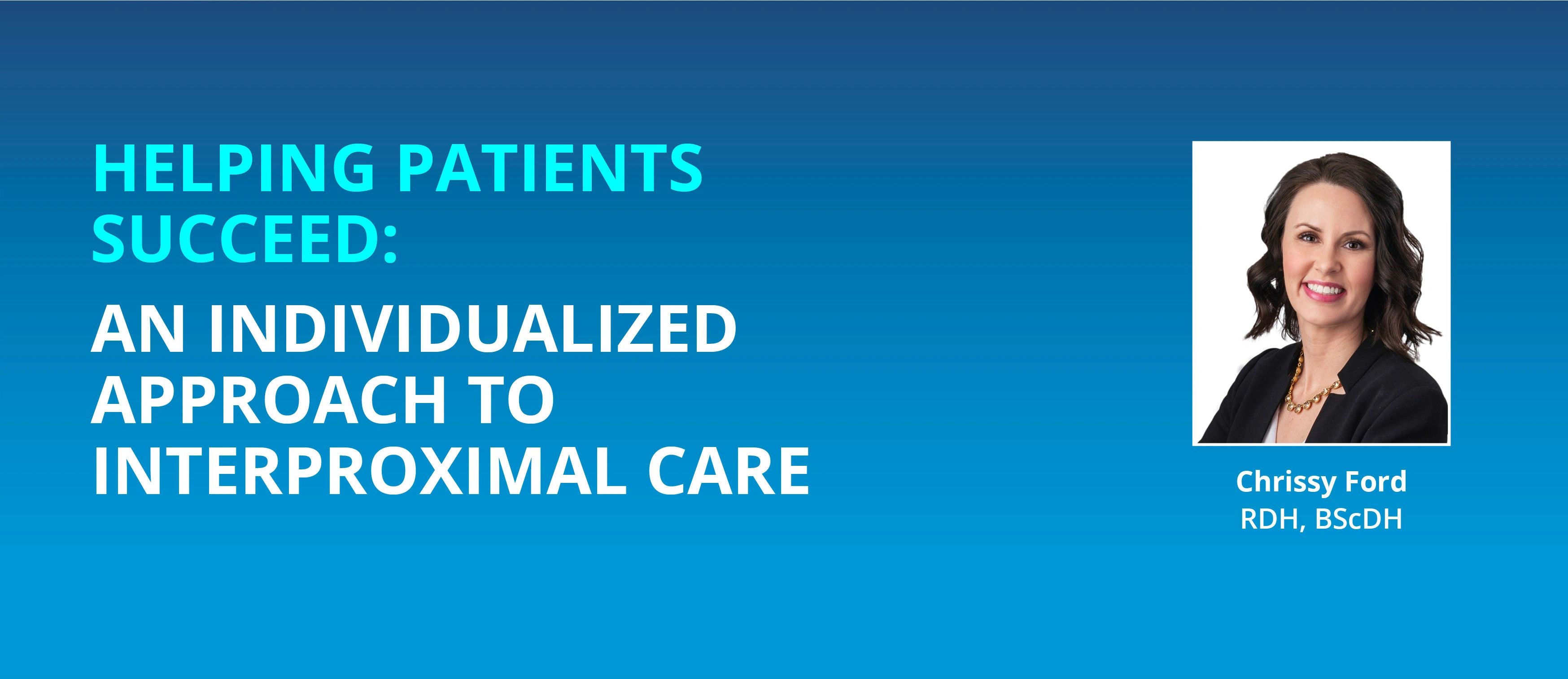Helping Patients Succeed
As dental professionals we understand that brushing alone cannot adequately clean all surfaces of the teeth and daily flossing or interdental cleaning is necessary. Historically, oral healthcare providers have promoted flossing as the interdental cleaning recommendation of choice. Despite data that illustrates the importance of flossing, surveys show that only 28.3% of dentate Canadians floss at least five times a week.1
" only 28.3% of dentate Canadians floss at least five times a week1 "
Why do dental professionals often struggle to gain patient compliance with interdental cleaning and what can we do to help our patients succeed and take a proactive approach to their oral health?
Examining Patient Needs
Typical interdental floss and brushes can pose compliance challenges due to dexterity issues, pain associated with sensitive gums and inaccessibility around implants and orthodontic brackets. As we know, failing to conduct adequate interdental cleaning can result in irreversible oral health outcomes.
It is critical we create a more individualized approach to home care that our patients will be motivated to adopt. Finding something the patient is willing to use is the most crucial step. As dental care professionals, we need to tailor the best oral hygiene devices and methods to patients’ skill level and preferences because patient acceptance is crucial for sustained long-term use.2
It is time we move beyond the one-size-fits-all recommendation of brushing and flossing. To help our patients succeed and drive compliance, we must consider our patients’ oral health and preferences when recommending an interdental routine.
Helping Patients Succeed with Water Flossing
We have seen improved patient compliance with using water flossing over string flossing as it requires less manual dexterity and easier adaptation. Besides dislodging plaque and food debris, an oral irrigator has also been shown to help treat and prevent gingivitis and improve gum health.3 Water flossers easily clean between tightly spaced teeth, hard-to-reach areas and are safe to use around orthodontics, implants and dental restorations.
The New Oral Irrigator on The Block
Oral-B’s new oral irrigator has taken water flossing to new heights. It features exclusive OxyJet Technology to help target and help eliminate plaque bacteria for cleaner teeth and healthier gums.
- The OxyJet™ technology mixes air and water to destroy anaerobic bacteria and provides the patient with a gentler experience.
- Two exclusive on-demand pulses, which provide patients with the ability to release water continuously or only when needed for a targeted, controlled clean; as well as two nozzles and three intensity levels enable patients to customize their experience.
- The cordless, single-body premium design allows for ease of use and portability.
“The OxyJet technology mixes air and water to destroy anaerobic bacteria "
Offering Convenient Solutions for Better Patient Compliance Selling homecare products such as the Water Flosser Advanced in-office is not about revenue, it is about creating convenience and motivation for our patients to help them get healthier.
Fifty percent of patients expect us to offer what we prescribe in the office with the main reason being they want to make sure they get what we prescribe them.4
We have all experienced frustration when patients return for their next hygiene visit, never having picked up the product we’ve recommended. We can help remedy this frustration by conveniently offering oral care recommendations directly in-office.
For offices taking the initiative, it’s truly a win/win situation that leads to overall better compliance of the tools we recommend and sets our patients up for oral health success. A happy, healthy patient is the best practice builder!
References:
1. Report on the Findings of the Oral Health Component of the Canadian Health Measures Survey 2007-2009.
2. Sanz M, Herrera D, Kebschull M, et al; On behalf of the EFP Workshop Participants and Methodological Consultants. “Treatment of stage I–III periodontitis—The EFP S3 level clinical practice guideline.” J Clin Periodontol. 2020;47:4–60.
3. Rosema NA, et al., J Int Acad Periodontol. 2011; 13 (1): 2-10.
4. Ipsos May 2021 Online Survey, Perfect Patient Experience Study.







